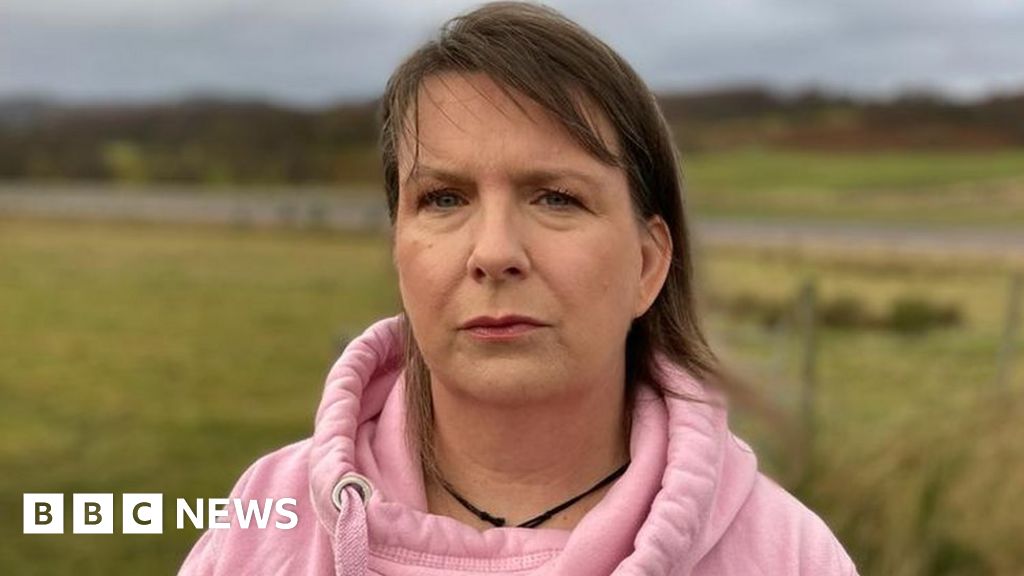This video can not be played
To play this video you need to enable JavaScript in your browser.
The number of people killed in crashes on one of Scotland’s most notorious stretches of road have risen to their highest level in 20 years.
Thirteen people have lost their lives on the 112-mile section of the A9 between Inverness and Perth this year.
There have been attempts to improve safety while work continues on a £3bn project to dual about 77 miles of remaining single carriageway.
But campaigners say local residents are in constant fear of the next crash.
Transport Scotland said it recognised that the “concerning” increase in fatalities required urgent attention.
Transport Minister Jenny Gilruth told BBC Radio Scotland’s Drivetime programme that she could not put a date on when the dualling project would be complete until after a procurement process.
She said she expected to receive advice on the process in coming weeks, adding that short-term actions to improve safety would be brought before parliament.
Ms Gilruth said: “One life lost on Scotland’s roads is one life too many.
“This year we have seen a substantial increase in the number of fatalities on A9. That’s affected families, individuals and communities right across Scotland and also beyond.”
- The latest headlines from Scotland
- Read more stories from the Highlands and Islands
- Read more stories from Tayside and Central
Concerns over safety on the A9 – which is Scotland’s longest road, running for 230 miles from Scrabster, near Thurso, to Dunblane, near Stirling – date back decades.
Official figures show there were 15 deaths on the Inverness to Perth stretch in 1988, then 21 the following year.
In 2011, the Scottish government pledged to dual the remaining single carriageway parts of that section of the road.
According to the A9 Safety Group, whose members include Bear Scotland, Police Scotland and Highland Council, some 77% of all fatal and serious accidents on that stretch took place on single carriageways.
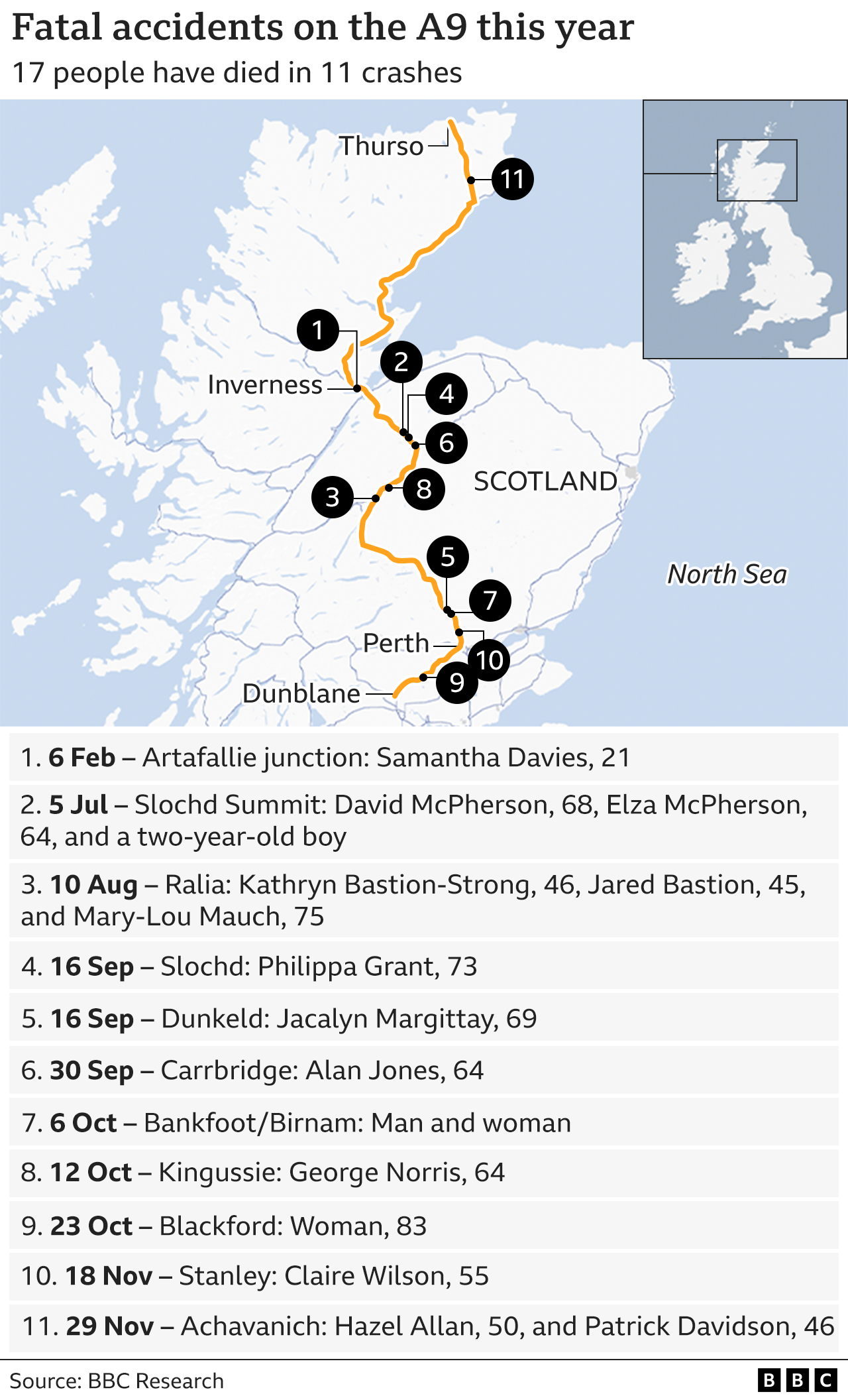
Over the last 10 years, work has been completed on two sections, totalling 11 miles of road.
The Scottish government said key preparations had begun on eight of the remaining nine sections. Design work to identify a preferred route for the Pass of Birnam to Tay Crossing is ongoing.
The A9 Dual Action Group campaign has called for a revised timetable and detailed plans for all the outstanding sections – and a renewed commitment to the project being completed by 2025.
Campaigner Laura Hansler, who lives in Kincraig, near Aviemore, said those living near the A9 had a feeling of dread when they heard the sound of the emergency services.
“The moment we hear a siren out on the A9 we collectively hold our breaths, because we are wondering who is coming next?” she said.
“Is it going to be one of mine, is it going to be a neighbour?”
Ms Hansler said the action group’s main goal was to prevent the number of head-on crashes which have happened on the road.
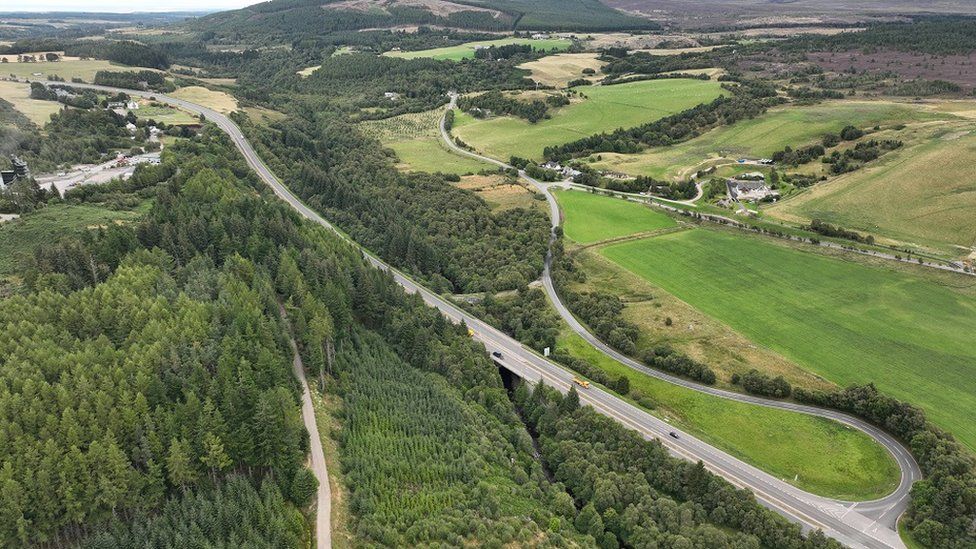
She said the mix of single and dual carriageway between Inverness and Perth confused some drivers, and heightened the risk of collisions.
In October 2014, a network of average speed cameras was introduced in an effort to reduce casualty numbers while work continued on the dualling programme.
The number of fatalities dropped, before rising again this year.
In 2022, 13 people have died in eight fatal accidents between Inverness and Perth.
The casualties have included a two-year-old and his grandparents at the Slochd, south of Inverness, in July.
In August, three members of a family visiting Scotland from the US were killed at Ralia, also in the Highlands.
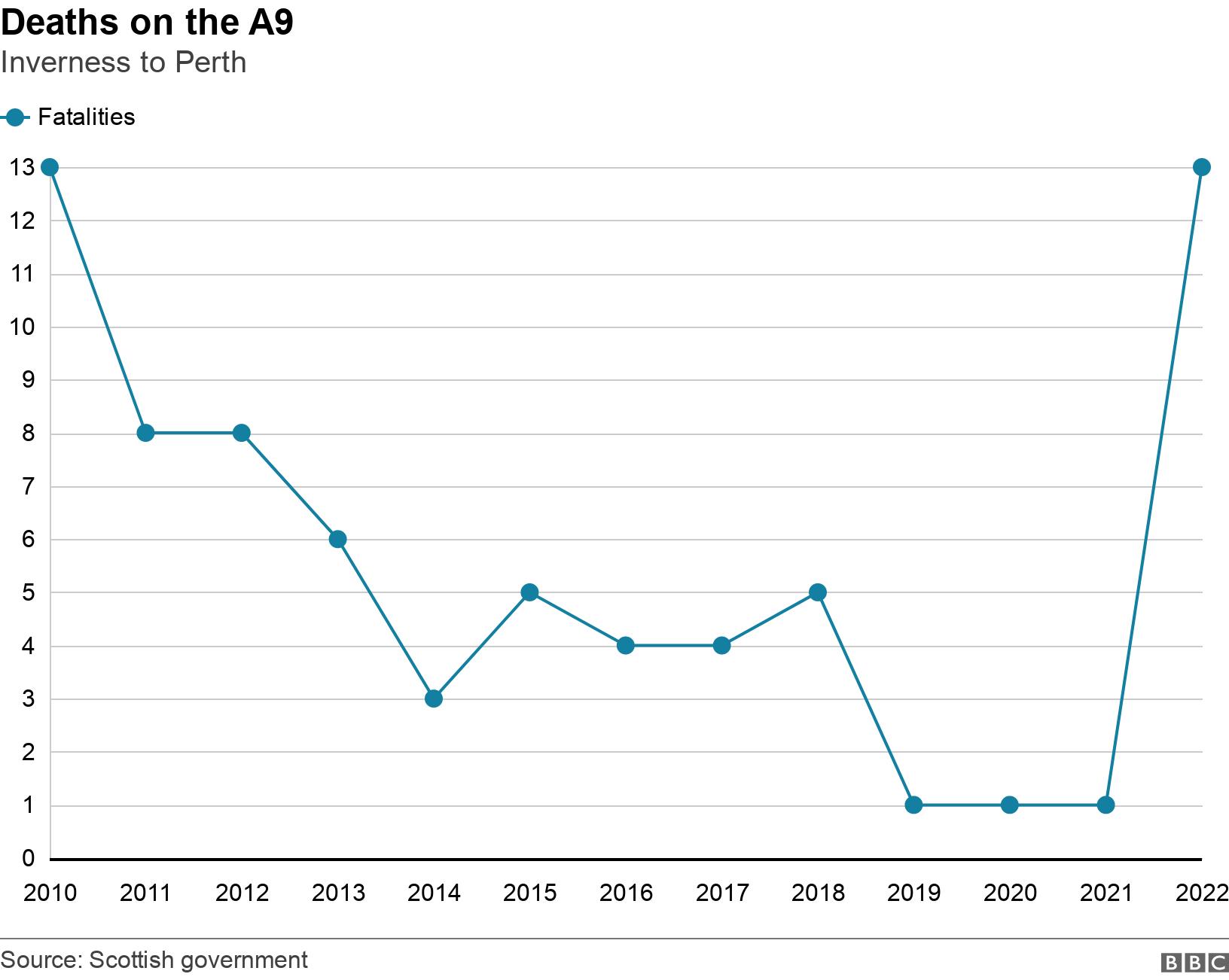
There have been fatal accidents at Dunkeld and near Bankfoot in Perthshire.
Along the full length of the road there have been a total of 17 fatalities. The most recent were the death of a man and a woman in Caithness last week.
This is the highest number for the entire road since 2009, according to Police Scotland data.
Caithness councillor Matthew Reiss, a former police officer, said residents of Caithness and Sutherland – home to 15% of the Highland population – were desperate for improvements.
The A9 is single carriageway for 104 miles from the Tore Roundabout on the Black Isle to Scrabster, with some sections featuring hills and bends around the coast.
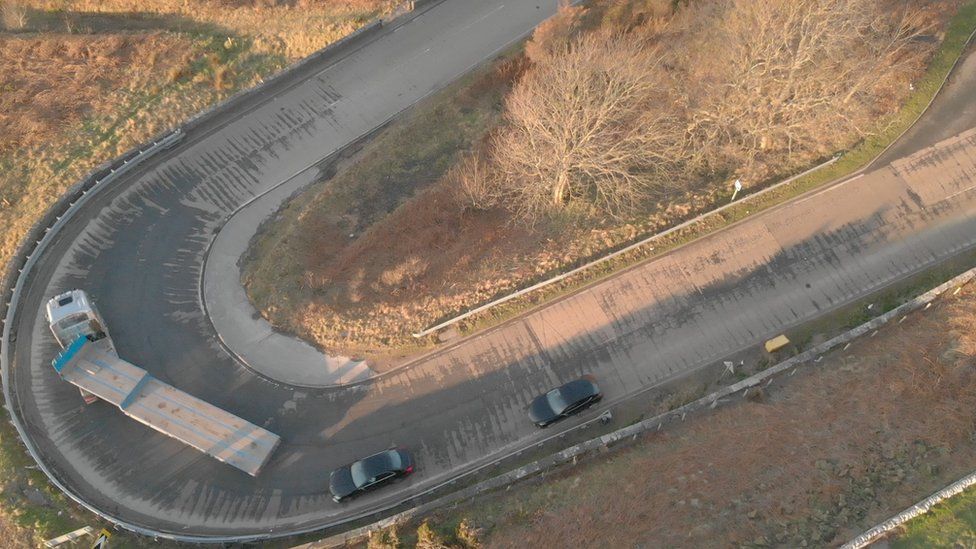
A new £9.6m stretch of the A9 was opened at Berriedale Braes in 2020 to overcome a challenging hairpin bend, but Mr Reiss said local communities would welcome upgrades to the road just north of Brora – around Portgower – also between Newport and Dunbeath and at the Cambusavie bends.
“We are not asking for dual carriageway, but modest improvements,” said Mr Reiss.
Transport Scotland said £95,000 would be invested in further A9 safety schemes over the next four months between Inverness and Perth, including enhanced signs and road marking at key locations.
The Scottish government agency added that £431m of investment had been delivered so far on the dualling programme – one of the biggest transport infrastructure projects in Scotland’s history.
Transport Scotland said it continued to work with organisations like the road safety charity, Brake, to help make Scotland’s roads safer.
A spokeswoman said: “One death on Scotland’s roads is one too many and our sympathies lie with all those affected by such tragic incidents.
“As the transport minister has made clear in parliament, the concerning increase in fatal road collisions on the A9 requires urgent attention.”
This video can not be played
To play this video you need to enable JavaScript in your browser.
Sgt Steve Livesey is among members of the emergency services frequently called to the scene of serious and fatal accidents on the A9.
He said: “Every one (accident) has to be taken on its own merit. However, you can see trends – particularly foreign drivers seem to be featuring this year.
“We are also getting local tourists from the UK who are unfamiliar with the road.”
He added: “I think the responsibility is with the driver, and the responsibility is on the driver to understand the road.
“The road itself is not an unsafe road.
“Yes, dualling would make the road quicker with traffic flow. However, if everyone was driving responsibly and effectively then we wouldn’t have any collisions.”
PC Niall Collin, who is involved in forensic investigations of crash scenes, said: “There is only so much you can prepare for when you turn up and find things that realistically nobody should see.
“Not just a police officer… nobody should see these kinds of things. It does play on you over time.”
The Scottish Conservatives said progress on the dualling project had been “painfully slow”. MSP Graham Simpson said: “Every single one of these deaths is a tragedy and my thoughts are with those who have lost a loved one.”
-
Man and woman killed in Land Rover crash on A9
-
5 days ago
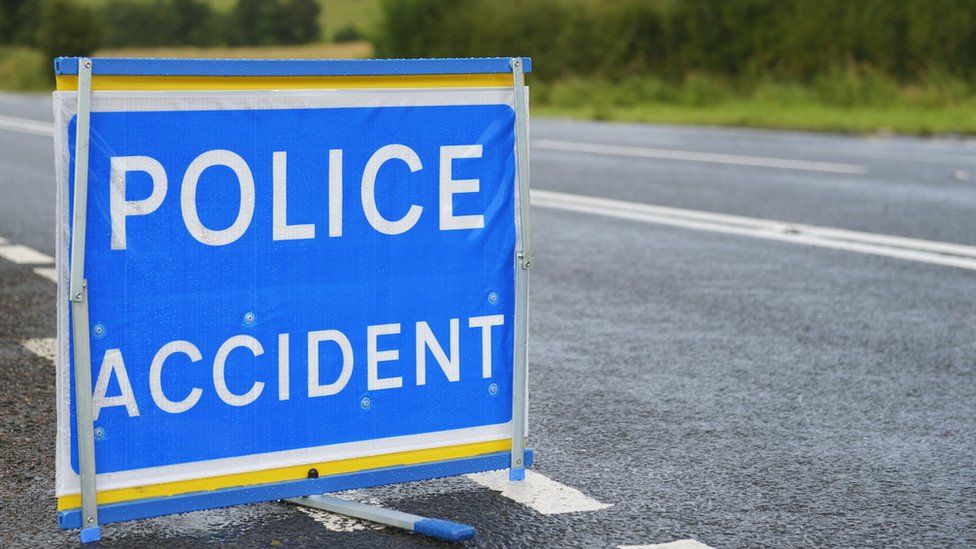
-
-
Three dead after Highlands road crash
-
5 July
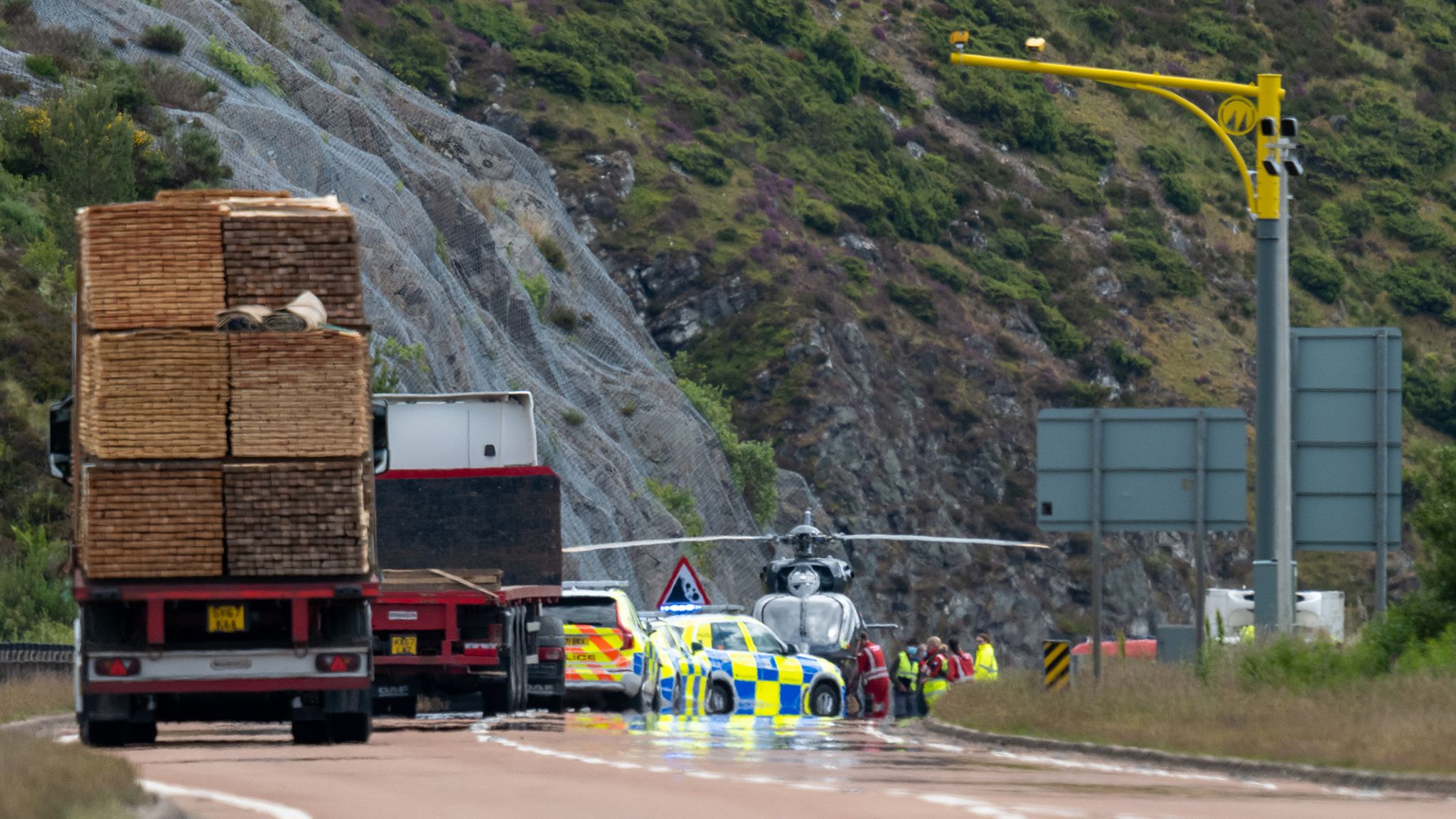
-
-
Third person dies following fatal crash on A9
-
15 August
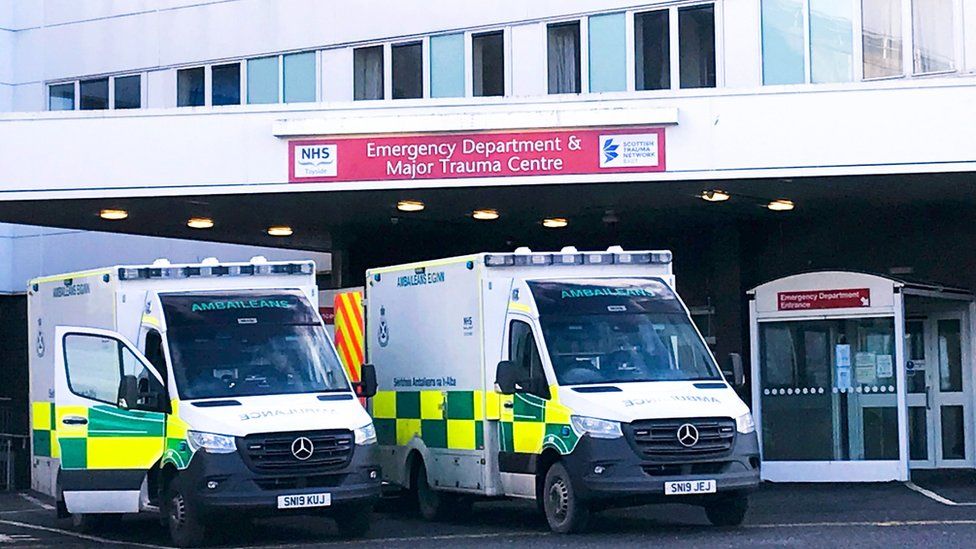
-
